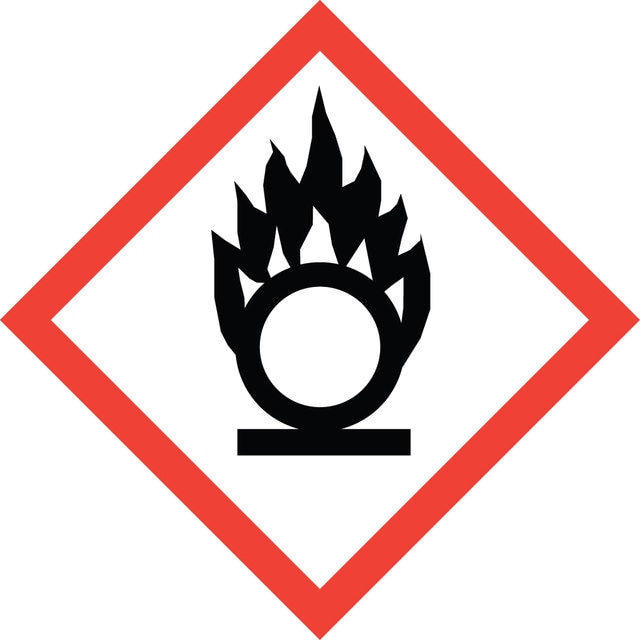310492
Potassium dioxide
chunks, 5-10 mm
Synonym(s):
Potassium superoxide
Sign Into View Organizational & Contract Pricing
Select a Size
About This Item
Empirical Formula (Hill Notation):
KO2
CAS Number:
Molecular Weight:
71.10
EC Number:
MDL number:
UNSPSC Code:
12352300
PubChem Substance ID:
NACRES:
NA.23
form
chunks
particle size
5-10 mm
SMILES string
[K+].[O][O-]
InChI
1S/K.HO2/c;1-2/h;1H/q+1;/p-1
InChI key
DUPSQGGNCHNYTQ-UHFFFAOYSA-M
Looking for similar products? Visit Product Comparison Guide
Signal Word
Danger
Hazard Statements
Precautionary Statements
Hazard Classifications
Ox. Sol. 1 - Skin Corr. 1B
Supplementary Hazards
Storage Class Code
5.1A - Strongly oxidizing hazardous materials
WGK
WGK 3
Flash Point(F)
Not applicable
Flash Point(C)
Not applicable
Personal Protective Equipment
dust mask type N95 (US), Eyeshields, Gloves
Regulatory Information
危险化学品
易制爆化学品
This item has
Choose from one of the most recent versions:
Already Own This Product?
Find documentation for the products that you have recently purchased in the Document Library.
A Rohnstock et al.
Toxicology in vitro : an international journal published in association with BIBRA, 21(8), 1552-1562 (2007-06-19)
Reactive oxygen species (ROS) play a predominant role in various diseases and the development of fast and easy methods for the quantification of intracellular ROS represents an important goal. Therefore, the aim of the present study was the evaluation of
Weiqin Jiang et al.
Organic letters, 5(1), 43-46 (2003-01-03)
Potassium superoxide was examined as an alternative oxidation reagent for the Winterfeldt reaction. KO(2) was found to be superior to the original Winterfeldt protocol for base-sensitive substrates. [reaction--see text]
Brant A Smith et al.
Environmental science & technology, 38(20), 5465-5469 (2004-11-17)
The reactive oxygen species responsible for the transformation of carbon tetrachloride (tetrachloromethane, CT) by modified Fenton's reagent using hydrogen peroxide (H2O2) concentrations >0.1 M was investigated. Addition of the hydroxyl radical scavenger 2-propanol to modified Fenton's reactions did not significantly
Andreas Daiber et al.
The Journal of biological chemistry, 277(14), 11882-11888 (2002-01-24)
Based on the previous report of McCord and co-workers (Crow, J. P., Beckman, J. S., and McCord, J. M. (1995) Biochemistry 34, 3544-3552), the zinc dithiolate active site of alcohol dehydrogenase (ADH) has been studied as a target for cellular
N Wada et al.
Journal of bioluminescence and chemiluminescence, 12(1), 15-20 (1997-01-01)
Addition of KO2 in dimethyl sulfoxide (DMSO) to the in vitro bacterial luciferase reaction subsequent to its initiation resulted in a biphasic decay of light emission. The first and more rapid phase is attributed to quenching by DMSO. With DMSO
Our team of scientists has experience in all areas of research including Life Science, Material Science, Chemical Synthesis, Chromatography, Analytical and many others.
Contact Technical Service
